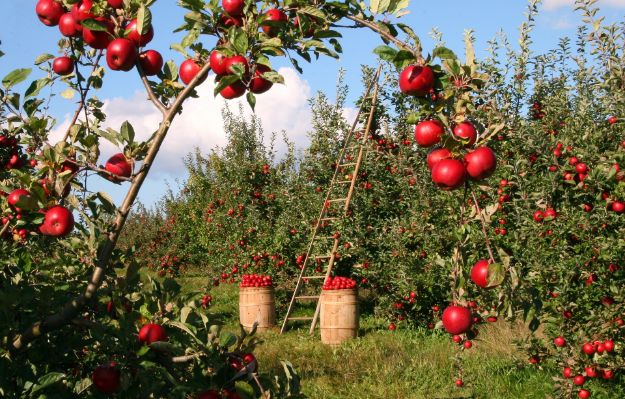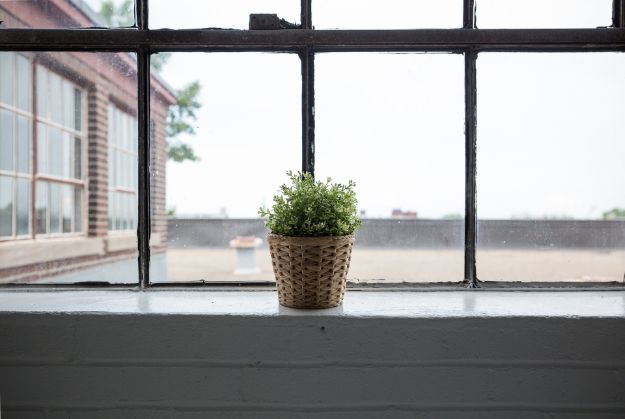Want to get started in straw bale gardening? If you want to try something new for your garden then this method is something you should look into! Get straw bale garden tips here.
Straw Bale Garden Tips
A Gardening Method Every Gardener Should Know and Try
I've been gardening for a long time now and whenever I can, I try to find new ways to grow it. So when I heard about straw bale gardening, I decided to give it a try. In case you haven't heard about it, it's a great gardening idea that transforms your regular straw bale into healthy new soil. It's great for planting almost anything, gives you added height so you won't have to bend over as much and can even extend your planting season. If those aren't enough reasons for you to try this method, it's also a plus that you'll have fewer location limitations. Since you're growing on straw bale, soil isn't really necessary. So if you want to get started, here's all you need to know!
You can thank Fix.com for this guide on how to start straw bale garden.
Straw Bale Garden Tips: Bounty By The Bale

How to Condition a Straw Bale
Day 1
Sprinkle the top of each bale with 1/2 cup of a high nitrogen fertilizer. Then water the bale.
Day 2
Water the bales again.
Day 3
Add 1/2 cup fertilizer to each bale. Water
Day 4
Water. It should take less water not to get the bales fully saturated.
Day 5
Add 1/2 cup fertilizer to each bale. Water.
Day 6
Water.
Day 7-9
Use 1/4 cup of fertilizer each day. Water. The bale should be heating up now.
Day 10
Sprinkle each bale with 1 cup of a balanced fertilizer and water.
Day 11
Leave bales alone.
Day 12
Ready to plant!
Straw Bale Gardening Tips
Get your straw in the fall.
- Easiest to source straw in the fall.
- Arrange straw bale garden before winter to be ready to plant in spring.
- Source straw straight from local farmer so you know how it was grown.
Position your bales correctly
- Lay down landscape fabric to prevent weeds from growing through bales.
- Place bales where you want them before conditioning process (they'll be much heavier after).
- Arrange bales side by side in rows with cut sides facing up.
- Strings that hold bales together should run across the sides (not the planting surface) to help keep bales together during planting season.
Give your straw plenty of nutrients
- Choose a fertilizer with a minimum of 5% active nitrogen content.
- Use blood meal or feather meal to condition the bales organically; it will require about six times as much volume.
- Look for blood meal at a farm supply store where it will be less expensive.
Virgin Soil
The inside of the bale transforms into new soil, preventing:
Disease
There is no carryover of the disease or fungal spores that often remain in soil from season to season.
Insects
Over the winter, many insects stay dormant in existing soil and attack plant roots the following spring.
Weeds
Conventional soil generally contains thousands of weed seeds. Straw bales do not.
Raised Height
- The physical requirement to maintain a soil garden can become limiting.
- With the raised height of the bales, there is less of a need to bend over.
- Once the bales are positioned, the physical part of the straw bale garden is complete.
Extended Planting Season
- Rapidly growing and dividing bacteria in the straw heats up the bale.
- While temperatures are too hot to plant for roughly 12 days, the residual warmth means gardeners can plant earlier in the season.
- The extra boost of heat can lead to much faster root development, earlier flowering and fruit set, earlier fruit set, and ripened crops weeks before a traditional soil.
Fewer Location Limitations
Straw bale gardens can thrive on asphalt and concrete; which means you can plant in a driveway or on a rooftop.
Straw Holds Moisture
- Cohesion allows a dry bale of straw to absorb and hold 3 to 5 gallons of water.
- The moisture trapped in the bale provides a steady supply of water for the tiny developing root hairs.
- Once fully saturated, the bale won't hold another drop and cannot be overwatered.
- Straw bales contain many air spaces between particles and inside stalks, which allows air exchange for roots.
Roots Stay Watered While Leaves Stay Dry
A tall trellis encourages vines and climbers to crawl vertically above the bales which results in:
- Better sun exposure
- Better air circulation
- Drier leaves
Do you think it's something you're going to try? I think it's a great way to start your garden a budget! – Share your thoughts in the comments.


Can you use hay instead?
No you cannot use hay
can you use sugar cane instead?
You could try sugarcane but the leaves are harder and bigger than straw. Straw is the dried wheat plant. Much finer than sugarcane. But try it and see shag comes out of this experiment. If you are in the tropics you could try riceplants after harvesting the rice.
Shag is what, sorry